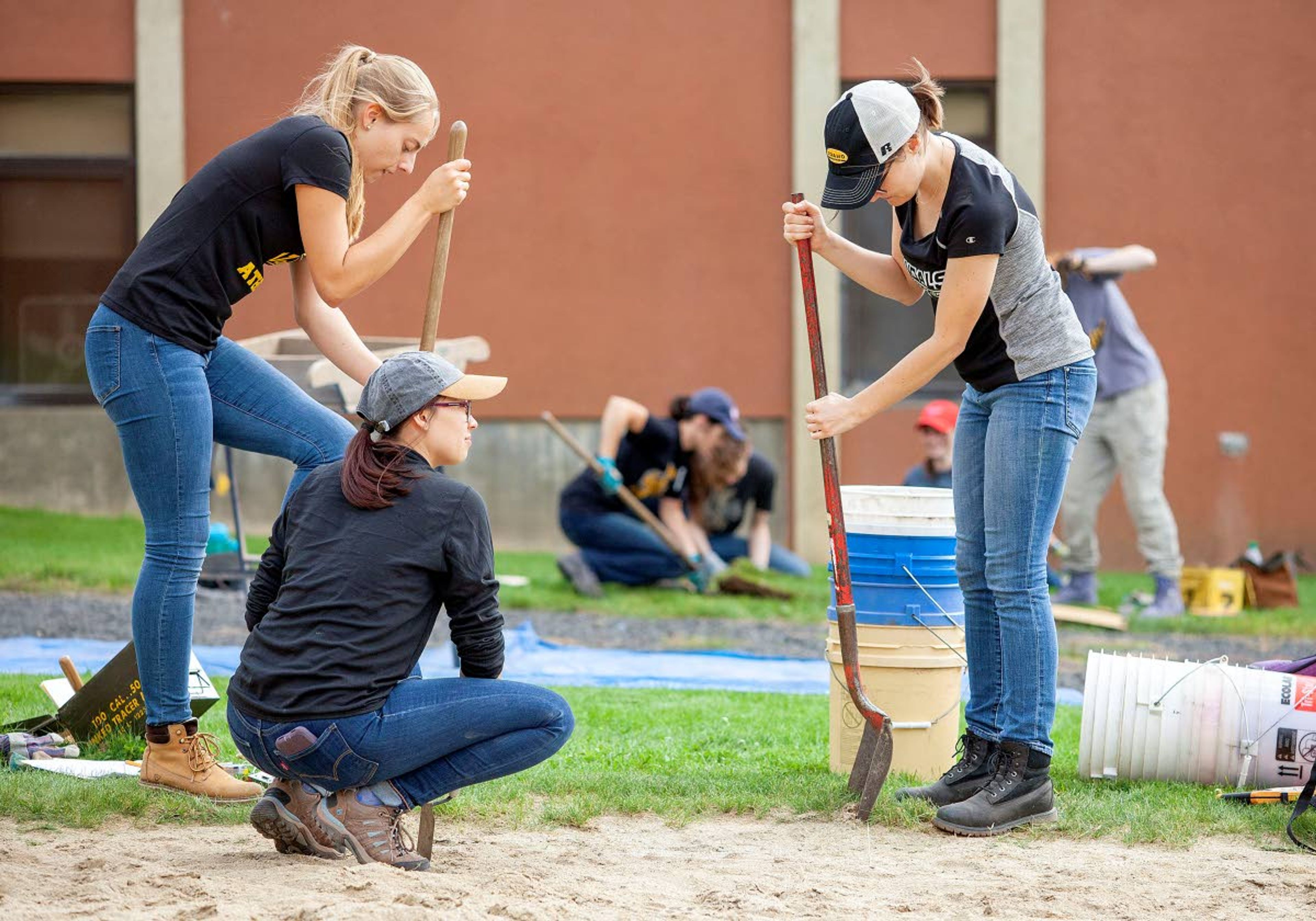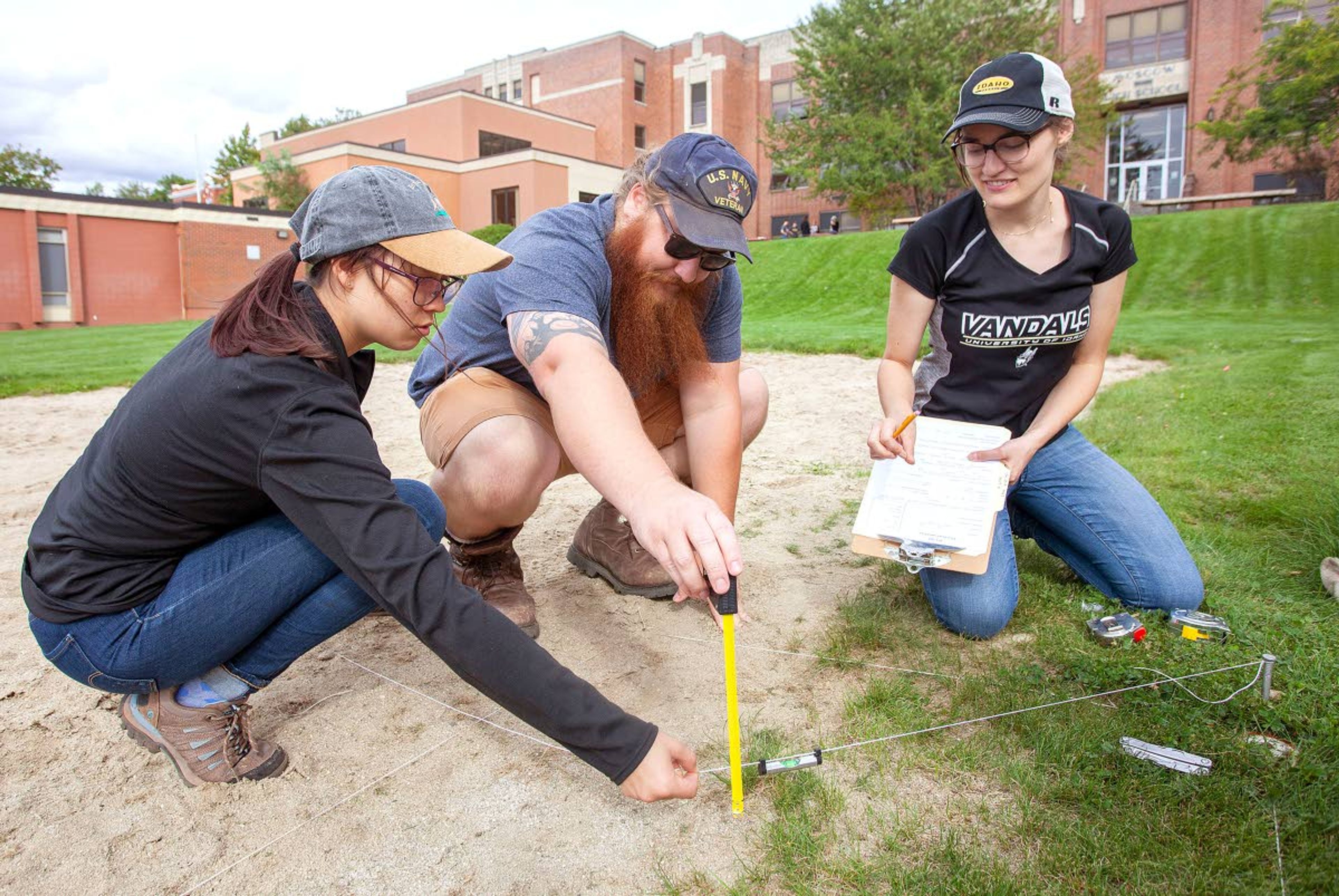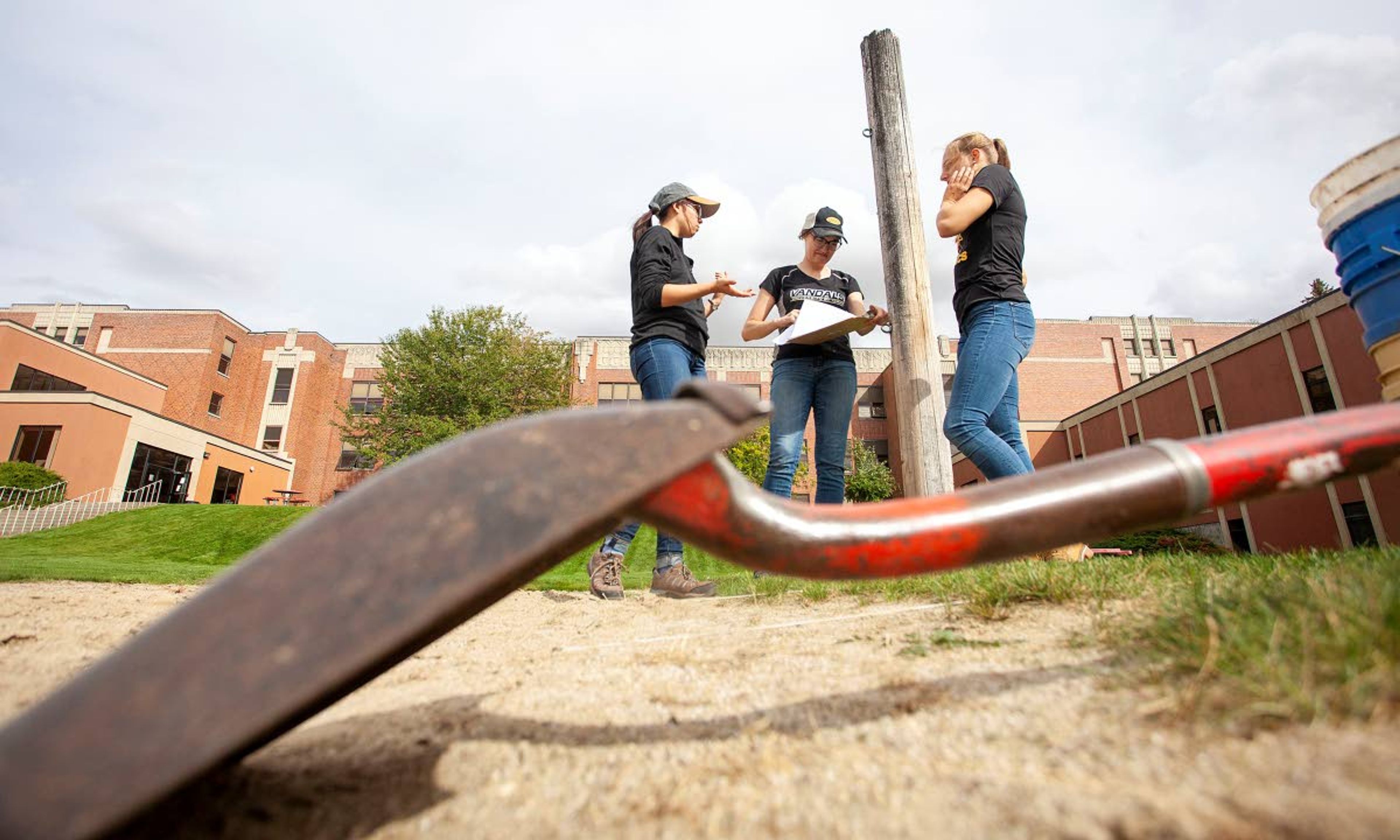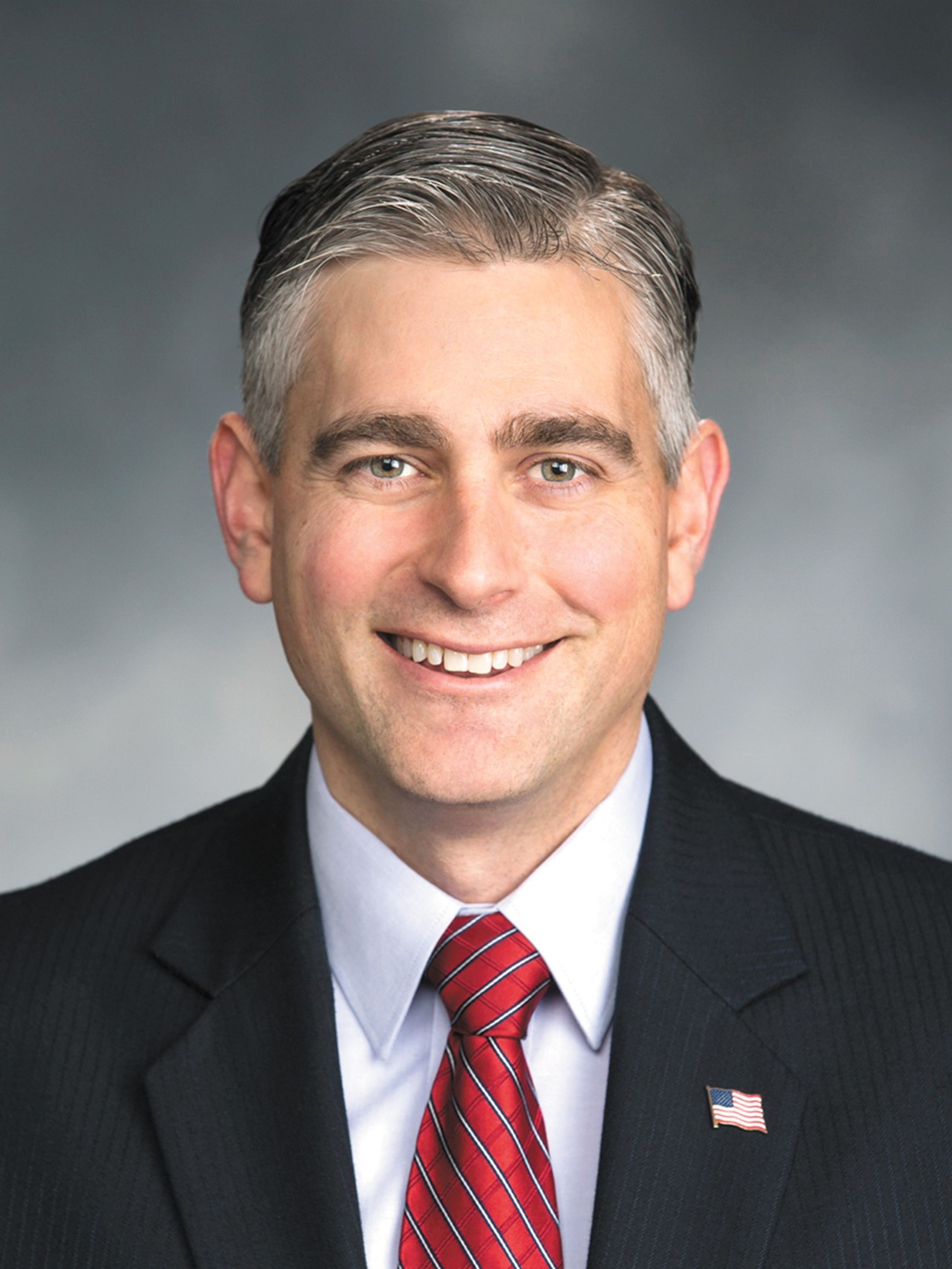‘History is beneath your feet’
UI researchers invite students, community to participate in archaeological dig at Moscow High campus
A pair of University of Idaho archaeologists have partnered with Moscow High School to host a set of archaeological dig sites on school grounds.
UI professor Mark Warner, who is with the school’s Department of Sociology and Anthropology, is helping lead the project. He said the work done at MHS could have real archaeological significance, but it’s also a good way to invite the community to engage with science and history in a novel and convenient way.
Warner said the dig sites will be active and open to MHS students and the public on Saturdays and Fridays after school. With the high school’s proximity to downtown, Warner hopes to draw hundreds of curious students and community members.
“We’re doing it in part for teaching purposes, in part for outreach purposes, and in part for potential research purposes,” he said. “The ground that the high school sits on is part of the earliest settlement of the town and ‘historical archaeology’ is a way to explore history of the recent past through, basically, the stuff they left behind.”
In addition to sitting atop an early footprint of the town, the site is also where the city’s first high school stood in the 1890s — the 1912 Center across the street was the second. Even with the existing building, Warner said, there is more than 80 years of recent history to explore connected to public education. Warner said another important function of the project is that it gives undergraduate students an opportunity to cut their teeth on field research.
“This will be my first dig and I’m really interested in combining chemistry and archaeology, so I think this is a good fit for me,” said Lilian Bodley, a senior at UI who works in a lab on campus that helps identify archaeological artifacts through chemistry. “I figured I’d spent the last four years doing chemistry, I might as well get out into the field once.”
Both historical archaeologists by trade, Warner and his co-lead on the project, UI assistant professor Katrina Eichner, said their work largely deals with connecting cultural narrative with physical artifacts. Eichner said viewing a society through the artifacts they leave behind paints a different and, at times, more intimate picture than reading the historical accounts of those people. Seemingly mundane details of daily life, lost to time, can come into sharper focus by unearthing something as simple as a hairbrush.
“We like to find documentation with the actual material things that people use,” Eichner said. “By looking at the traces of daily life, we can actually get an idea of how people were experiencing the world, not just based on what they thought was worth writing down.”
Warner said this kind of work can also serve to highlight the sort of global connections that existed in seemingly isolated societies. For example, Warner said, a dig he hosted in Sandpoint uncovered 19th century artifacts hailing from more than 30 different states and about 11 countries.
“People think about archaeology as often these exotic locales but, look, history is beneath your feet here in Moscow,” Warner said. “This is an opportunity for people to learn about history in a very different way than through books.”
Scott Jackson can be reached at (208) 883-4636, or by email to sjackson@dnews.com.









